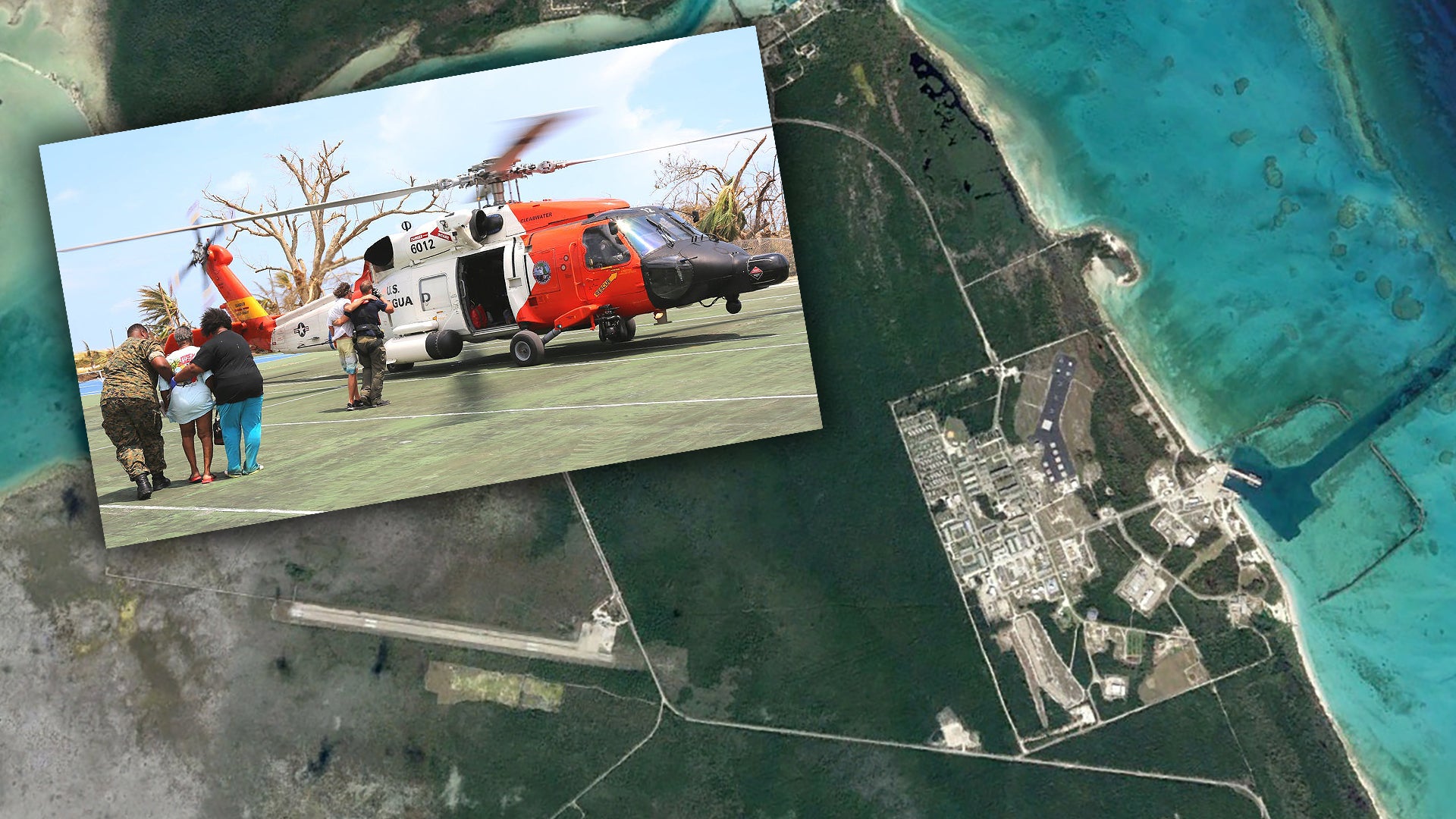The U.S. Coast Guard has rescued hundreds of people across the Bahamas in the wake of Hurricane Dorian using helicopters operating from a little known and secretive U.S. Navy submarine test base situated on one of the islands in the archipelago. The Atlantic Undersea Test and Evaluation Center’s detachment on Andros Island’s main job is managing expansive test ranges so the Navy can conduct various underwater tasks, such as measuring the acoustic signatures of submarines and validating those signatures before deployments, as well as anti-submarine and electronic warfare research and development activities.
As of Sept. 6, 2019, the Coast Guard had deployed seven MH-60T Jayhawk and six MH-65 Dolphin helicopters to AUTEC’s facilities on Andros Island. The service has saved at least 205 people in the Bahamas since it began operations in the aftermath of Dorian on Sept. 2, 2019. Fixed-wing Coast Guard aircraft, including its HC-130 Hercules rescue planes, have been operating from bases in Florida to conduct aerial surveys and other search and rescue functions, as well. Elements of the U.S. Navy, Marine Corps, and Air Force, as well as U.S. civilian agencies, have also been involved in the American response to the disaster and more active-duty personnel, as well as elements of the National Guard, could be deploying to the Bahamas soon.
Hurricane Dorian had first made landfall in the Bahamas on Sept. 1, 2019, causing devastation across numerous islands in the country, including the Abaco Islands and Grand Bahama. There have been at least 30 confirmed fatalities so far, but Bahamian officials have warned this could rise dramatically in the coming weeks given that thousands of people are still unaccounted for. Pictures and video that have emerged so far show extensive damage and scattered debris.




“Our emergent priority is to get the critically wounded out and help the government of the Bahamas get the infrastructure back up so it’s safe, sanitary and livable – at least on a temporary basis – for those folks,” U.S. Coast Guard Captain James Passarelli, chief of staff of the service’s 7th District, told CNN. “Most of the operations to date have been relocating and transporting the critically injured to a higher level of medical care.”
Using AUTEC’s Bahamian base makes good sense. The site has 12 helipads and associated helicopter support facilities necessary for Navy and contractor-operated helicopters performing work on the nearby ranges. there is also a nearby airstrip. Beyond being able to help on Andros Island itself, from there, it’s less than 150 miles north to Great Abaco or Grand Bahama. It’s around a 100 miles from the Florida mainland to Grand Bahama, but closer to 200 miles from there to Great Abaco. The Coast Guard has made use the central location of the Navy facilities in the past to support responses to previous hurricanes, as well as counter-narcotics missions.
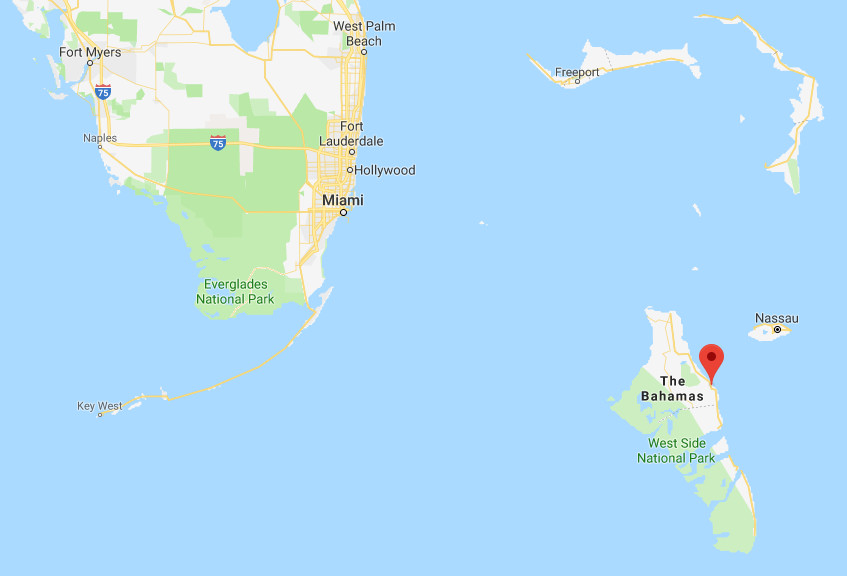
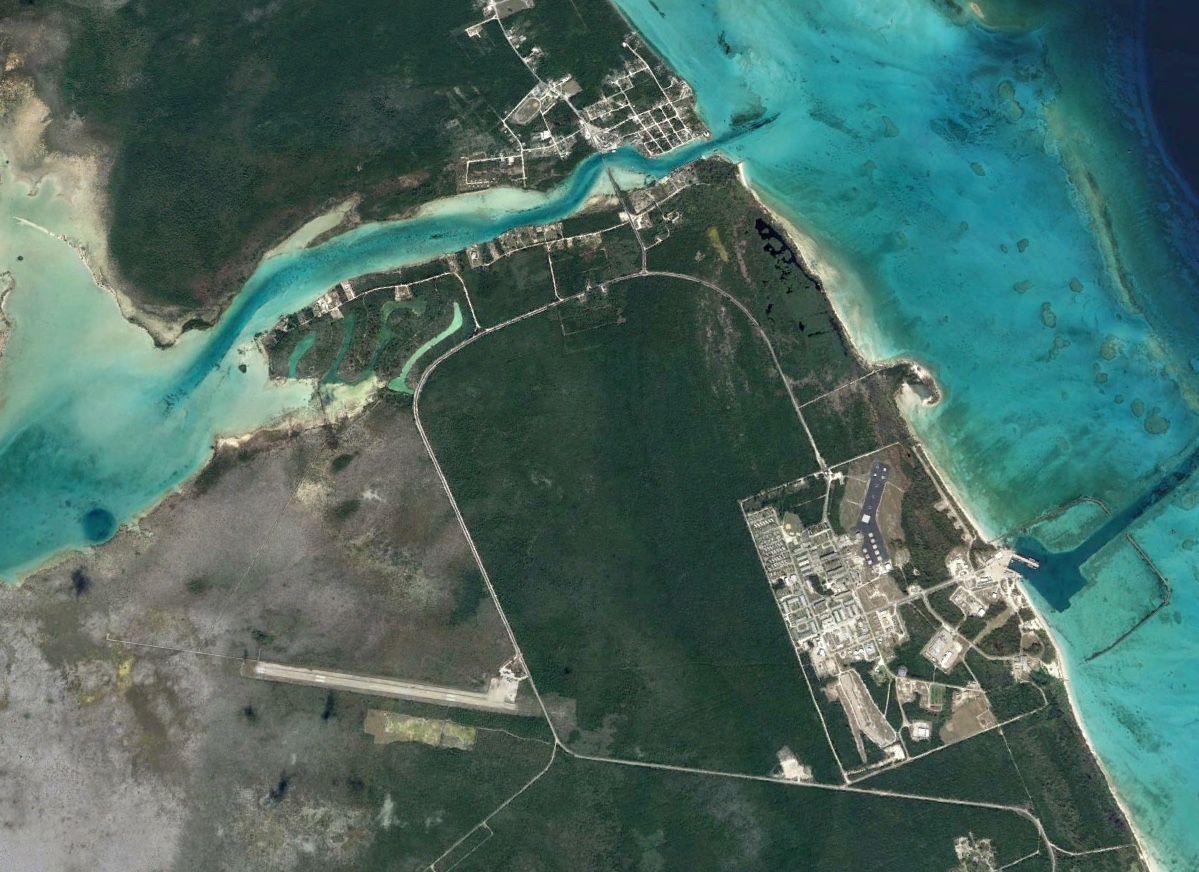

The area also happens to be home to a particularly deep stretch of water called the Tongue of the Ocean, or TOTO, located to the east of Andros Island. TOTO is around 150 miles long, has a general width of around 20 miles, and is up to 6,000 feet deep at certain points. More importantly, it’s a u-shaped trench that has a relatively flat bottom and is well shielded from ambient ocean disturbances and noise by Andros and other islands, reefs, and shoals that surround it.
This makes it an ideal area for AUTEC to test submarines and other underwater systems, as well as anti-submarine weapons and sensors on surface ships and aircraft. It is about as close to a laboratory setting in the real world as you can get and it’s relatively easy to cordon off while testing and other activities are ongoing.
One of the primary activities that the Navy conducts within AUTEC’s deepwater ranges, formally known as the South TOTO Acoustic Facility (STAFAC), is measuring the acoustic signatures of submarines. This is done for testing purposes, as well as to validate and confirm that a submarine’s signatures are what they should be before an operational deployment or following major maintenance and refitting.
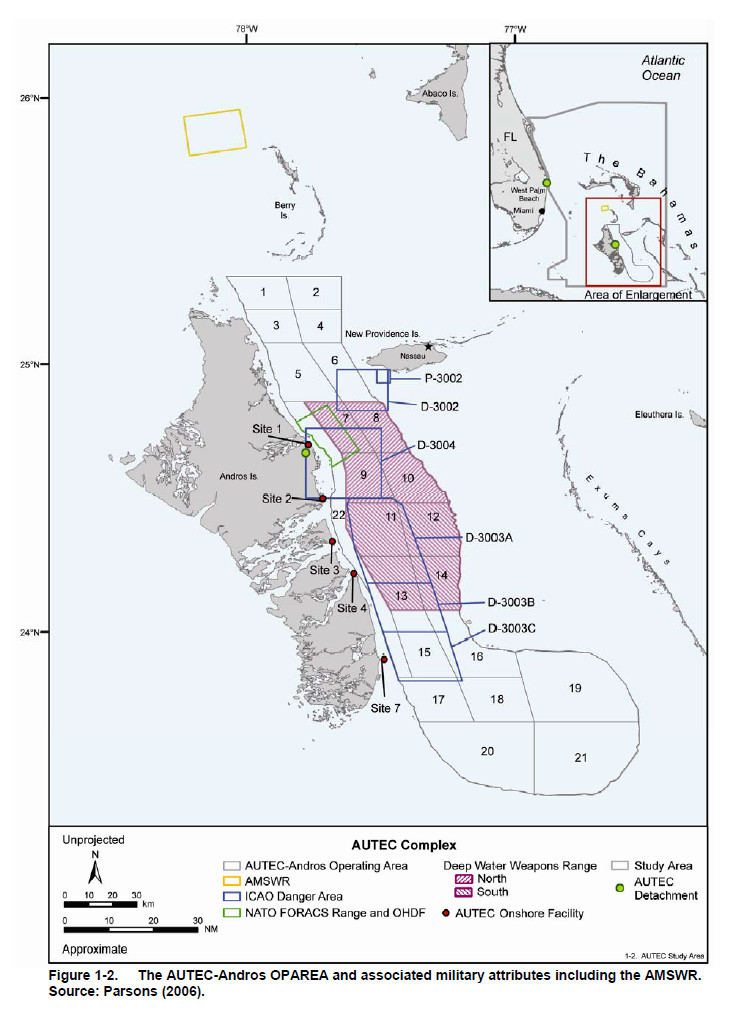
Using various equipment, including High Gain Measurement System (HGMS) arrays on the seafloor that you can read about in more detail here, personnel record radiated noise as a submarine passes through the range. A submarine’s survival in a combat situation, as well as its ability to sneak into target areas undetected, is directly linked to how quiet it is.
Facilities like AUTEC are vital to the Navy’s development of noise-reducing features for new and existing submarines, as well as concepts of operation to help further mitigate their acoustic signatures. There are other similar underwater test bases elsewhere in and around the United States, including the Navy’s Southeast Alaska Acoustic Measurement Facility (SEAFAC), situated north of Ketchikan, Alaska, and Navy’s Acoustic Research Detachment (ARD) in Bayview, Idaho.
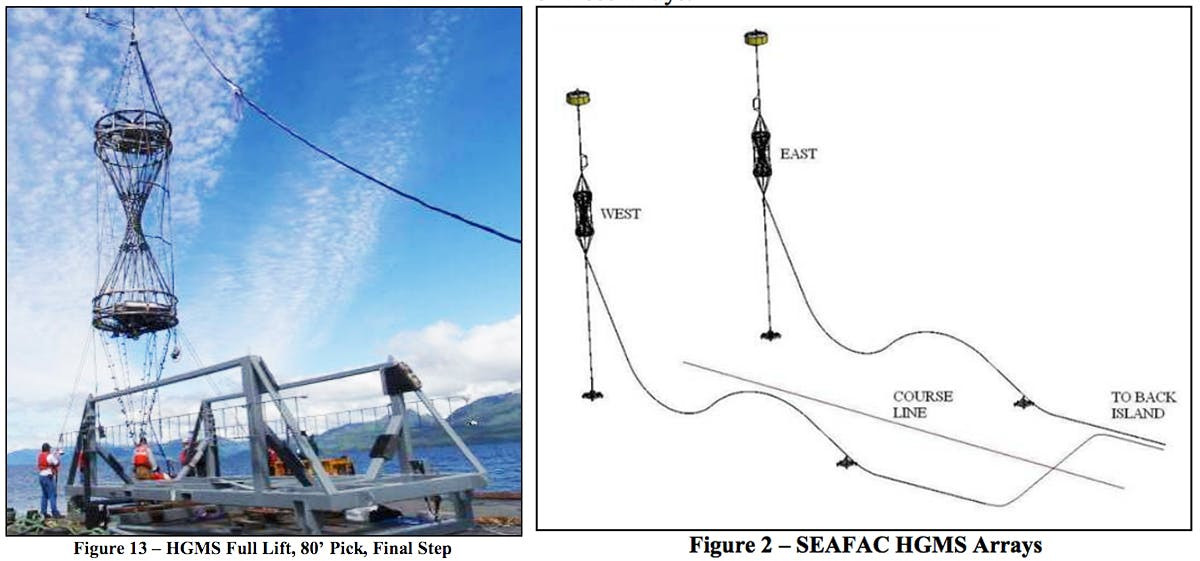
In addition, AUTEC’s ranges offer sufficient space for surface ships and aircraft to test how good their sensors are at detecting underwater targets and how well their weapons, such as improved versions of the Mk 48 torpedo, are at engaging them. Submarines can then test their own countermeasures and tactics through limited, mock combat, which can involve surrogate and otherwise simulated threats.
A full list of AUTEC’s capabilities also notes that it supports research and development of anti-torpedo countermeasures, mine warfare systems, and various other underwater capabilities. AUTEC also provides similar services to NATO allies as part of the alliance’s Naval Forces Sensor and Weapon Accuracy Check Sites program, or FORACS. The facilities on Andros Island are also connected to AUTEC’s main headquarters in West Palm Beach, Florida, and the two can share information during tests in near-real-time.
In addition, the base operates an Electronic Warfare Threat Simulator (EWTS) that can “generate complex, dynamic, electromagnetic signal environments at the radio frequency (RF) level” to support additional research and development work on the surface and in the air. The threat of adversaries employing various kinds of signal jamming and spoofing against U.S. naval forces during an actual conflict has only grown in recent years, making systems such as the EWTS ever more essential for creating truly real-world representative threat environments for both testing and training purposes.
For the moment, AUTEC’s much more visible role will be in supporting the continued disaster relief efforts in the Bahamas. With Dorian now moving up the East Coast of the United States, the Coast Guard’s helicopters, as well as other U.S. military and civilian elements, may move their activities onto other impacted islands. For that to happen, Bahamian authorities and their American and other international partners will need to work to open airports and other facilities first. On Sept. 4, 2019, four Marine Corps MV-22 Osprey tiltrotors flew an Air Force Airfield Assessment Team into the Bahamas to begin surveying the state of available sites.
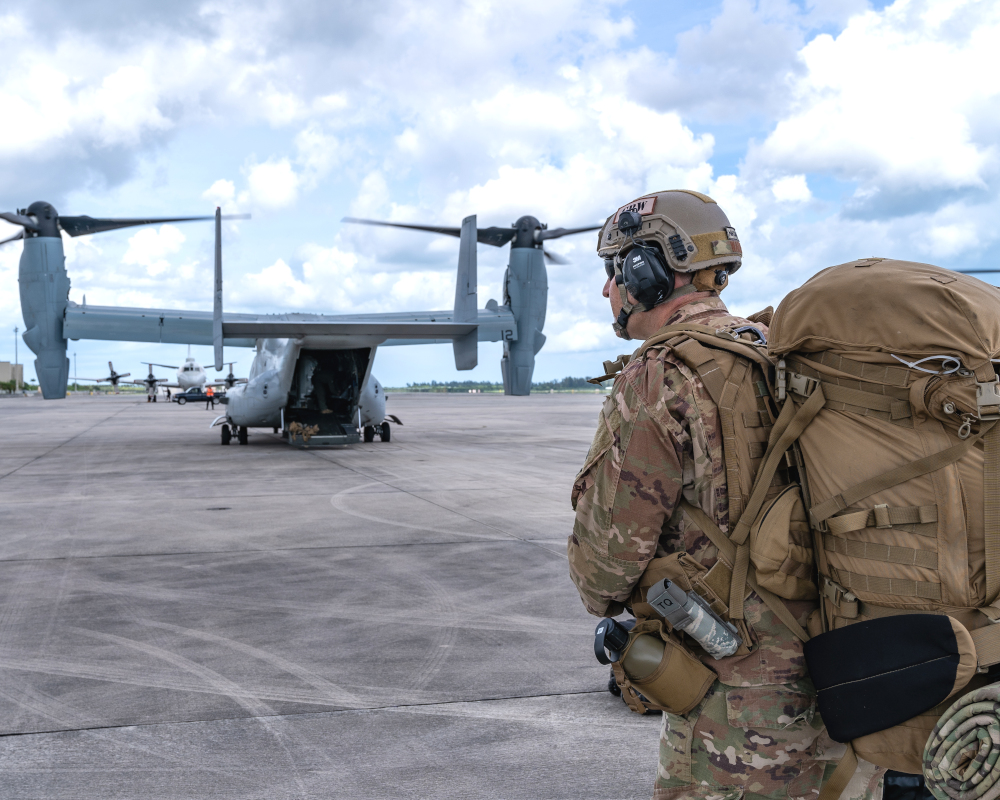
In the meantime, the Navy’s vital submarine test base on Andros Island will continue to serve as an important staging point for the Coast Guard live-saving operations throughout the Bahamas.
Contact the author: joe@thedrive.com
